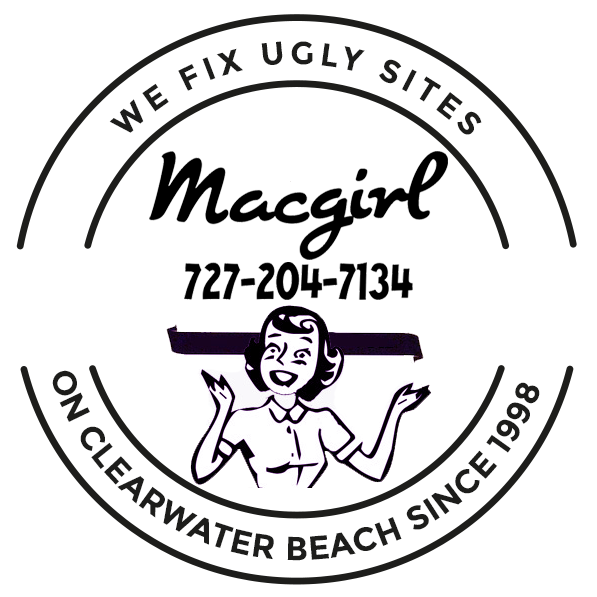If a page of your site appears in Google’s search results, it is because Google has identified your page as highly relevant to people searching for words in your page. This is why it is so important for your page to have a clear and distinct title and description which accurately represents the content of the page.
[/vc_column_text][vc_empty_space height=”30px”][vc_column_text]A title tag tells both users and search engines what the topic of a particular page is. The *title* tag should be placed within the *head* tag of the HTML document. Ideally, you should create a unique title for each page on your site.
[/vc_column_text][vc_column_text]Words in the title are bolded if they appear in the user’s search query.
This can help users recognize if the page is likely to be relevant to their search . The title for your homepage can list the name of your website, business and could include other bits of important information like the physical location of the business or maybe a few of its main focuses or offerings.
[/vc_column_text][vc_column_text]Every Image is IdentifiedWe code each image correctly by providing a text equivalent (a description of the image) to make that image “accessible”. We recommend adding a title and a URL to every image to add search-engine friendly elements to your page.[/vc_column_text][vc_column_text]Every Page has a Pixel-Perfect Look
We use Style Sheets (CSS) to control how your pages look: this includes the color and size of the text, the links, the headers, the typeface (font), the size and positioning of the images, the margins, the line-height, the paragraph spacing, etc. By assuring uniformity throughout your site, style sheets make your site look pixel-perfect. An error-free, uniformly coded site lets your customers know that you adhere to and respect professional standards.[/vc_column_text][vc_column_text]Every Link is Descriptive
Link text should be meaningful enough to make sense when read out of context. Link text should also be short.[/vc_column_text][vc_column_text]Every Letter Works Magic
Your typeface defines your identity in the print world – we use it as part of your brand. Typography – the font face and size and thickness – is eye-candy. It gives people a first impression of your business. It conveys that you are friendly, or serious, or fun, or well-established… So much information is communicated by the type, color and style of your page. We can make sure that the way you look on line is the way you want to appear to your customers.
W3C Guidelines on CSS Fonts[/vc_column_text][vc_column_text]Predictable, Consistent Sizing
We add width and height dimensions to every image we code: this is not only good coding, it is good for your business. Every customer who looks at your web site sees the same image, on the same page, in the same position. We size and position images consistently throughout the site so that customers looking through your site gain a consistent feel of your company: a sense that your company is credible, trustworthy, established, safe.
W3C Module 13.2 on Images[/vc_column_text][mpc_icon_column mpc_icon__preset=”mpc_preset_17″ mpc_icon__icon_color=”#b3a383″ mpc_icon__icon_size=”36″ mpc_icon__background_type=”image” mpc_icon__background_size=”cover” mpc_icon__border_css=”border-radius:7px;” mpc_icon__padding_css=”padding:20px;” mpc_icon__margin_css=”margin:10px;” mpc_divider__disable=”true” mpc_divider__preset=”mpc_preset_15″ mpc_divider__align=”left” mpc_divider__content_type=”title” mpc_divider__content_position=”0″ mpc_divider__content_padding_divider=”true” mpc_divider__content_padding_css=”padding-right:10px;padding-left:0px;” mpc_divider__font_preset=”mpc_preset_131″ mpc_divider__font_color=”#555555″ mpc_divider__font_size=”20″ mpc_divider__font_line_height=”1″ mpc_divider__font_transform=”uppercase” mpc_divider__font_align=”left” mpc_divider__title=”Error Checking” mpc_divider__icon_type=”character” mpc_divider__icon_character=”M” mpc_divider__icon_color=”#76bdcc” mpc_divider__icon_size=”30″ mpc_divider__lines_number=”2″ mpc_divider__lines_color=”#e1e1e1″ mpc_divider__lines_gap=”6″ mpc_divider__padding_divider=”true”]
Error Checking
Error Checking prevents visitor’s from losing of confidence in your site because of broken links, bad spelling, features that crash browsers, inappropriate language, outdated scripts, etc. We check your spelling, your syntax, your grammar, your content: we take responsibility for everything on the page that represents you — because it represents us too!
We use a variety of applications and services to check for broken links, spelling errors, browser compatibility, accessibility, web standards validation and search engine issues.
[/mpc_icon_column][/vc_column][/vc_row]


